Dolphin Control and Pump Room
Control Room

In the center above the helm wheel is the rudder angle indicator, flanked on both sides by the engine order telegraphs. The lever on the vertical shaft was used to engage/disengage the control room helm from the conning tower and bridge helm. Which helm would have been the primary station for submerged operations? We would lean towards the conning tower, but that opinion might be flavored by what was done in combat in WWII and may not necessarily reflect pre-war 1930's practice.
Large levers next to helm are for switching from normal hydraulic to hand hydraulic. In hand hydraulic you spun the wheel to develop hydraulic pressure and this was a very laborious process.
Oval hatch in deck next to helm most likely leads to a store room. Note speaking tube to conning tower above the helm.
US Navy Photo Contributed by Roger Torgeson

Open grate in the deck leads most likely to the Pump Room and the grating is for drainage of any flooding into the Pump Room, where it can be pumped out through the main drainage system.
The square hatch is suspected to be the access to the Cold Room/Freezer. The padlock seen on the hatch seems to correspond to other food storage areas with padlocks making us think this is that space. Drawings indicate that the Cold Room/Freezer was directly under the middle of the Control Room.
On the right edge of the photo, just below the polished bell of the speaking tube, and above the battle lantern, is the mechanical linkage for the bow planes coming out of the angled enclosure just above and to the right of the bow planes control wheel.
US Navy Photo Contributed by Roger Torgeson

US Navy Photo Contributed by Roger Torgeson

US Navy Photo Contributed by Roger Torgeson
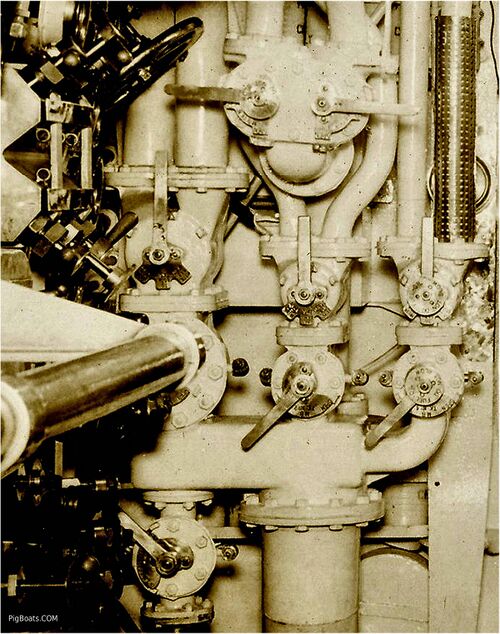
US Navy Photo Contributed by Roger Torgeson

US Navy Photo Contributed by Roger Torgeson
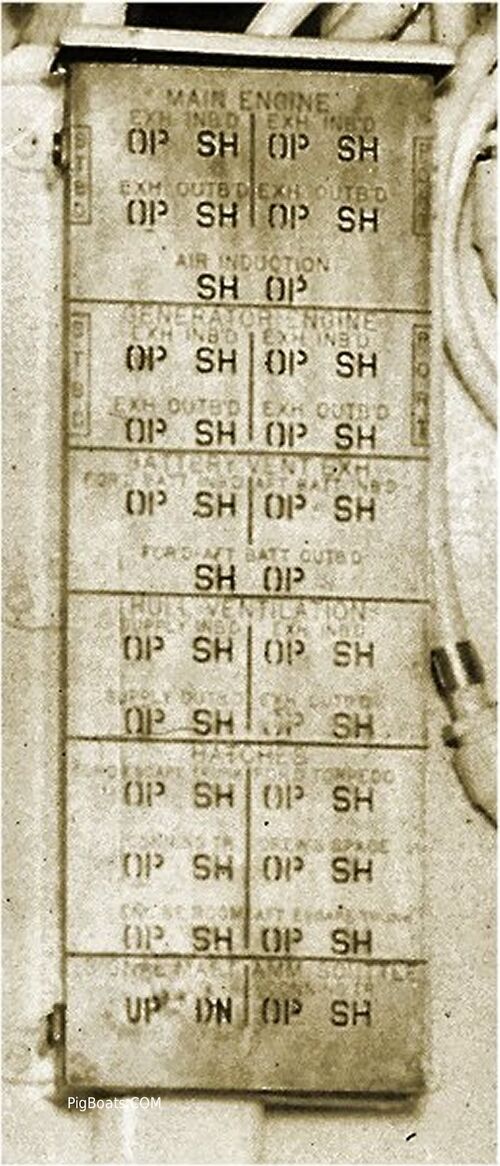
US Navy Photo Contributed by Roger Torgeson
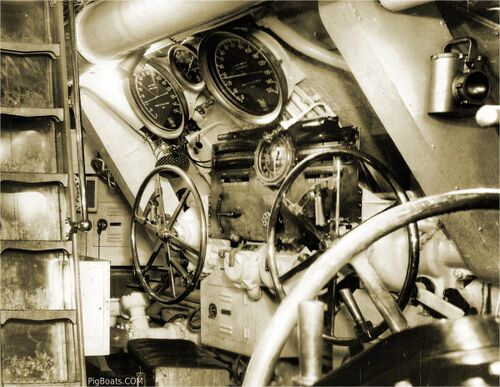
The large, angled sheet metal enclosures, to the left and right of the stern planes and bow planes wheels, cover the mechanical linkages for the stern and bow planes control rods.
US Navy Photo Contributed by Roger Torgeson
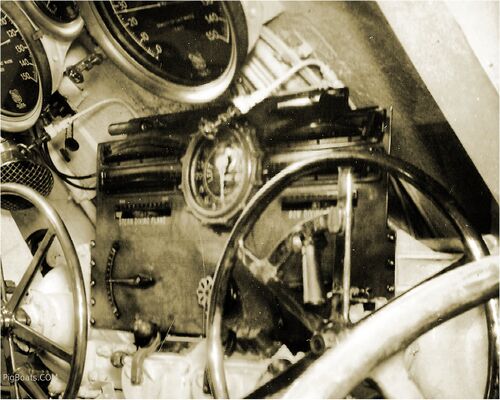
US Navy Photo Contributed by Roger Torgeson
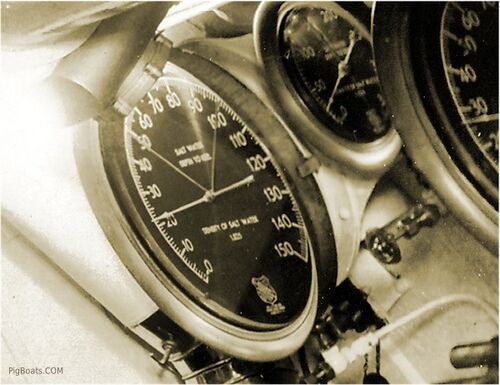
US Navy Photo Contributed by Roger Torgeson
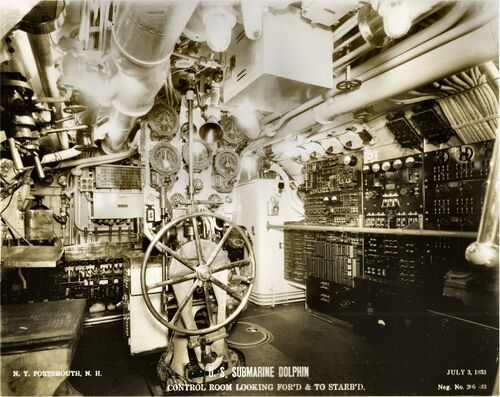
US Navy Photo Contributed by Roger Torgeson

US Navy Photo Contributed by Roger Torgeson
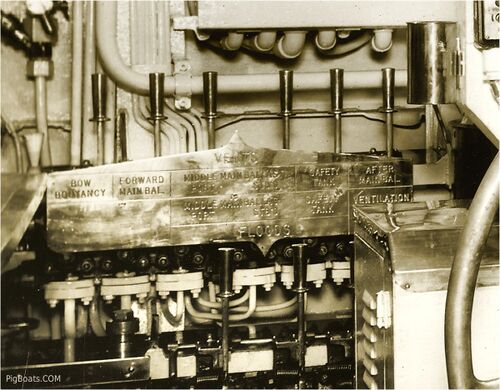
US Navy Photo Contributed by Roger Torgeson

Just to the right of these panels is a barometer. This was important to letting the crew know what was happening with weather but also in letting them know the submarine was closed up properly for diving. When all hatches and valves were closed a small amount of air was bled into the submarine and the barometer would register this pressure change. If everything was closed properly the pressure would not change. The report; "Pressure in the boat", would signal all was well and the dive could proceed. An important piece of equipment indeed.
Moving right we see the row of gauges for the air system and air banks and various pressures. The manifold seen below these gauges is the trim manifold which ports internal ballasting water around the boat. Air system valves are to the right and below of this manifold.
The row of large valves and piping seen in the overhead are associated with the Fuel Ballast Tank System.
US Navy Photo Contributed by Roger Torgeson

Labels on the trim manifold, top row of valves: "Aux Bal, Tk No1 Blow", "Aux Bal, Tk No2 Blow", "For'd Trim Tank Blow", "Aft Trim Tank Blow". Bottom Row: "Aux Bal, Tk No1 Vent", "Aux Bal, Tk No2 Vent", "For'd Trim Tank Vent", "Aft Trim Tank Vent". The three valve handles on the left read, Top: "200# Air For'd" and the bottom one reads "200# Air Aft". The center handle has nothing readable except "open" The bottom large handle says "200# Air From Reducer" Meaning Higher pressure air was sent through a reducer to become 200 pound air.
US Navy Photo Contributed by Roger Torgeson

US Navy Photo Contributed by Roger Torgeson
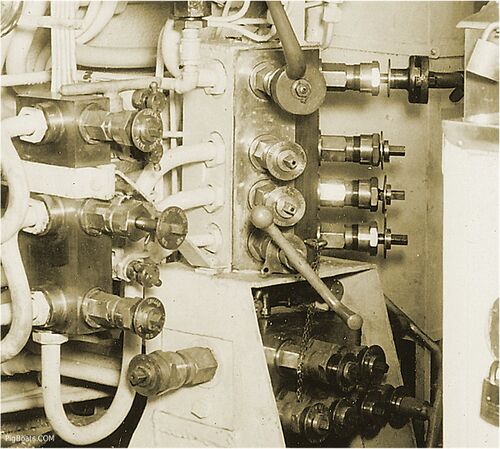
US Navy Photo Contributed by Roger Torgeson
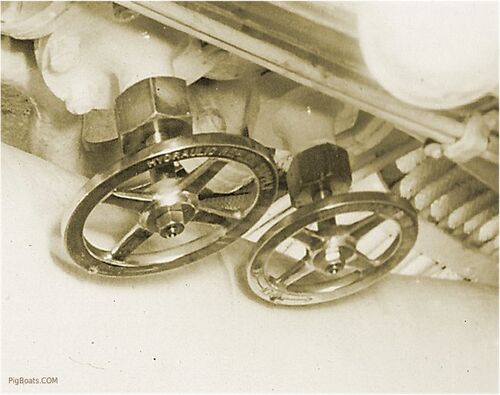
This is the earliest mentions we have seen to anything dealing with a hydraulic system on a submarine. The valve wheel says "Hydraulic Refill Supply". The other valve is unreadable. What this hydraulic system ran is not known at this time.
US Navy Photo Contributed by Roger Torgeson
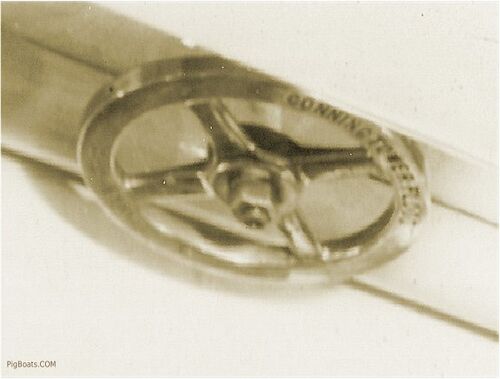
US Navy Photo Contributed by Roger Torgeson
Pump Room Starboard Side
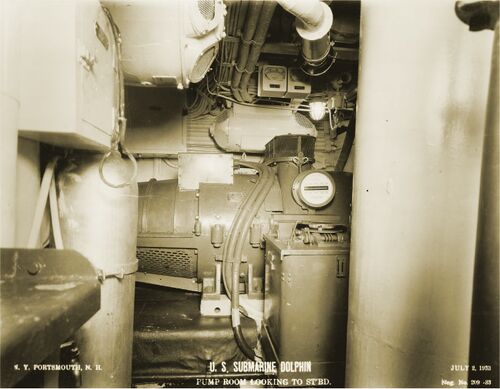
US Navy Photo Contributed by Roger Torgeson

US Navy Photo Contributed by Roger Torgeson

US Navy Photo Contributed by Roger Torgeson
Pump Room Port Side

US Navy Photo Contributed by Roger Torgeson
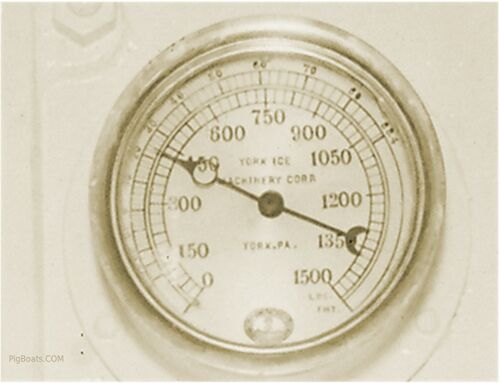
US Navy Photo Contributed by Roger Torgeson

The large vertical cylinder seen to the left side is the periscope well for the # 2 periscope.
US Navy Photo Contributed by Roger Torgeson
Cold Storage Room
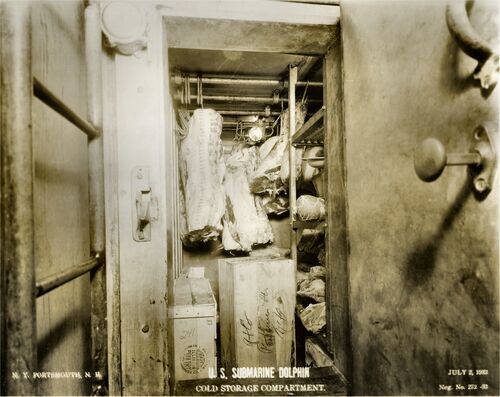
US Navy Photo Contributed by Roger Torgeson

US Navy Photo Contributed by Roger Torgeson

US Navy Photo Contributed by Roger Torgeson
Page created by:
Ric Hedman & David Johnston
1999 - 2023 - PigBoats.COM©
Mountlake Terrace, WA, Norfolk, VA
webmaster at pigboats dot com
